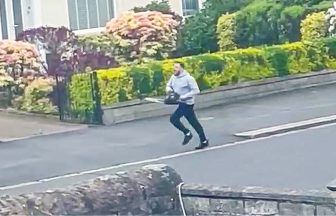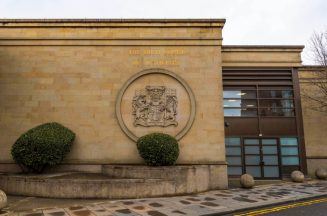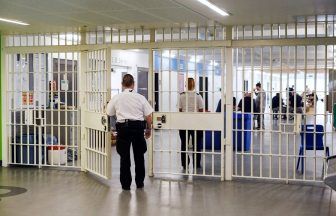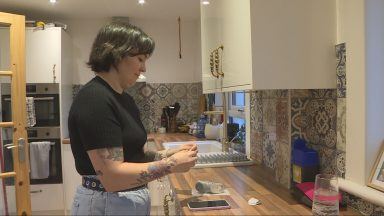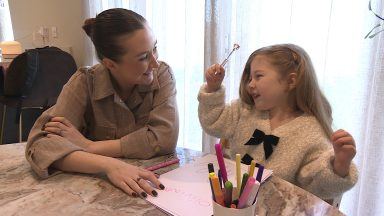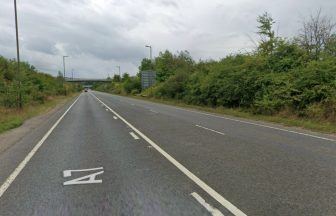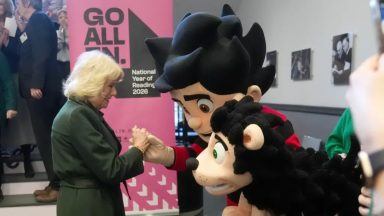The Stone of Destiny has been verified as the same stolen from Scone Abbey in the 13th century by scientists ahead of the King’s coronation next month.
Conservation experts in Edinburgh have discovered mysterious Roman numerals and tool markings using new technology ahead of its journey to Westminster Abbey for the coronation of King Charles III.
The ancient relic was used to inaugurate Scottish royalty for centuries, before being removed from Scone Abbey and taken to London by King Edward I in 1296.
The monarch will be crowned sitting on a throne containing the sacred sandstone in line with tradition on Saturday, May 6 at Westminster Abbey.
Historic Environment Scotland are the custodians of the stone, which is displayed alongside Scotland’s crown jewels.
Dr Ewan Hyslop, head of research and climate change at Historic Environment Scotland, said tests have confirmed that the stone at Edinburgh Castle is the same one stolen from Scone in 1296.
He told STV News: “We’ve been able to effectively fingerprint the Stone of Destiny.
“The work we’ve done has been able to verify that the stone we have in Edinburgh Castle, going down for the coronation, is certainly the stone removed from Scone in 1296 and has this long 700-year-old history and pedigree.
“That’s really important in term of the legends into the origins of the stone. It secures the object we have at Edinburgh Castle in terms of its provenance.”
The conservation team has been carrying out examinations of the stone’s composition and markings using “cutting-edge” new techniques for the first time to shed light on its 700-year history.
They also ensured it is in good enough condition to travel.
Dr Hyslop added: “We’ve examined the stone in detail to check it’s okay, it’s passed its MOT and is all ready to go.
“It’s literally a part of Scotland’s bedrock, it’s part of Scotland’s geology and framework. We’ve been able to shed new light and tell new stories that verify earlier work.
“It’s been a great opportunity to unravel that story.”
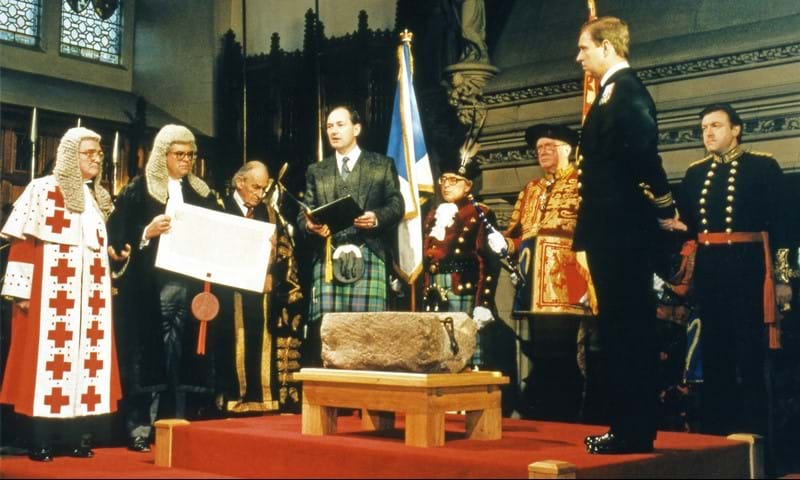 Historic Environment Scotland
Historic Environment ScotlandThe Stone of Destiny – its 700-year journey
The Stone of Destiny forms an important part of Scotland’s past.
It was seized from Scone Abbey in 1296 by Edward I during the Wars of Independence and built into a throne.
On Christmas Day 1950, a group of Glasgow University students famously broke into Westminster Abbey and smuggled it back to Scotland, sparking a nationwide manhunt.
While it was described as a “vulgar act of vandalism”, ministers decided it was not in the public interest to prosecute them.
The stone was later found at the high altar at Arbroath Abbey – where the assertion of Scottish nationhood was made in the Declaration of Arbroath in 1320.
It was returned to London in 1952 ahead of Queen Elizabeth II’s coronation in 1953.
It is currently on display in Edinburgh Castle after being officially returned to Scotland in 1996.
In November 2020, Nicola Sturgeon announced plans to relocate the stone to Perth in 2024.
3D technology sheds new light
Scientists have used microscopes and X-rays to examine the composition of the stone and compared it with other samples of stone around Scotland.
New 3D scans analysed the markings, including the repair work carried out on the stone after it was broken during removal in 1950, along with tool marks and previously unrecorded Roman numerals carved on the side.
Senior digital innovation officer Sophia Mirashafi said the technology helped scientists get “close and personal” with the relic and has been a game-changer for accessibility and education.
She said: “It’s allowed us to interrogate it in a brand new way. That’s the beauty of the virtual space.
“You can spend ages looking at it in detail.
Everytime you get to interact with something this precious and monumental, it’s special.
“To be in the same space documenting it and spending even more time finding new details you missed when it was right in front of you – it’s something really exciting for our whole team to work on.”

Historic Environment Scotland’s regional collections manager Rachael Dickson said it has been “very exciting” to understand more about the Stone of Destiny.
She said: “This is a new opportunity for us. This is the first time its been returned in Westminster in this way since Queen Elizabeth II was sitting on the throne.
“What we do is we look after the stone and part of our remit is to ensure its safe and secure movement down to Westminster under the conditions of the Royal Warrant.
“The stone is an ancient symbol of Scots monarchy and there are many myths and legends around it.
“The geological analysis matches up with previous analyses prior to its removal and that which we are undertaking today.
“We can say with certainty that the stone we see in Edinburgh Castle is the same stone taken by Edward I in 1296. It is the same stone taken in 1950 by Glasgow students from Westminster Abbey back up to Scotland.
“Our work has really helped us to understand more about the Stone of Destiny.”
Follow STV News on WhatsApp
Scan the QR code on your mobile device for all the latest news from around the country




